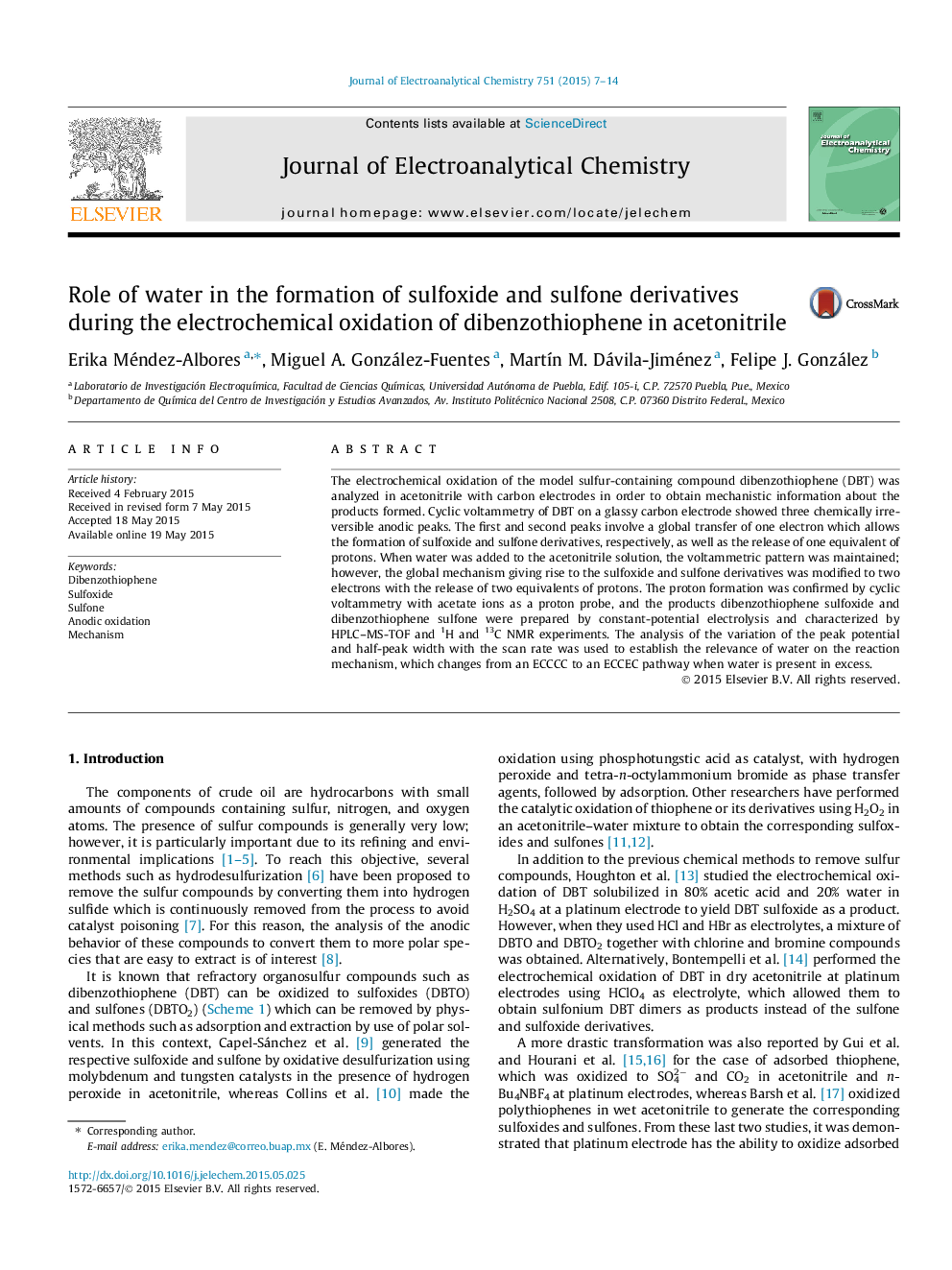| کد مقاله | کد نشریه | سال انتشار | مقاله انگلیسی | نسخه تمام متن |
|---|---|---|---|---|
| 218264 | 463190 | 2015 | 8 صفحه PDF | دانلود رایگان |

• The oxidation mechanism of dibenzothiophene in acetonitrile.
• The role of water on the formation of sulfoxide and sulfone DBT derivatives.
• One-electron vs two-electron transfer mechanisms in the oxidation of DBT.
• The proton as a product of the oxidation of DBT and DBT sulfoxide.
• A mechanism where solvated protons display the role of oxidant of radicals.
The electrochemical oxidation of the model sulfur-containing compound dibenzothiophene (DBT) was analyzed in acetonitrile with carbon electrodes in order to obtain mechanistic information about the products formed. Cyclic voltammetry of DBT on a glassy carbon electrode showed three chemically irreversible anodic peaks. The first and second peaks involve a global transfer of one electron which allows the formation of sulfoxide and sulfone derivatives, respectively, as well as the release of one equivalent of protons. When water was added to the acetonitrile solution, the voltammetric pattern was maintained; however, the global mechanism giving rise to the sulfoxide and sulfone derivatives was modified to two electrons with the release of two equivalents of protons. The proton formation was confirmed by cyclic voltammetry with acetate ions as a proton probe, and the products dibenzothiophene sulfoxide and dibenzothiophene sulfone were prepared by constant-potential electrolysis and characterized by HPLC–MS-TOF and 1H and 13C NMR experiments. The analysis of the variation of the peak potential and half-peak width with the scan rate was used to establish the relevance of water on the reaction mechanism, which changes from an ECCCC to an ECCEC pathway when water is present in excess.
Figure optionsDownload as PowerPoint slide
Journal: Journal of Electroanalytical Chemistry - Volume 751, 15 August 2015, Pages 7–14